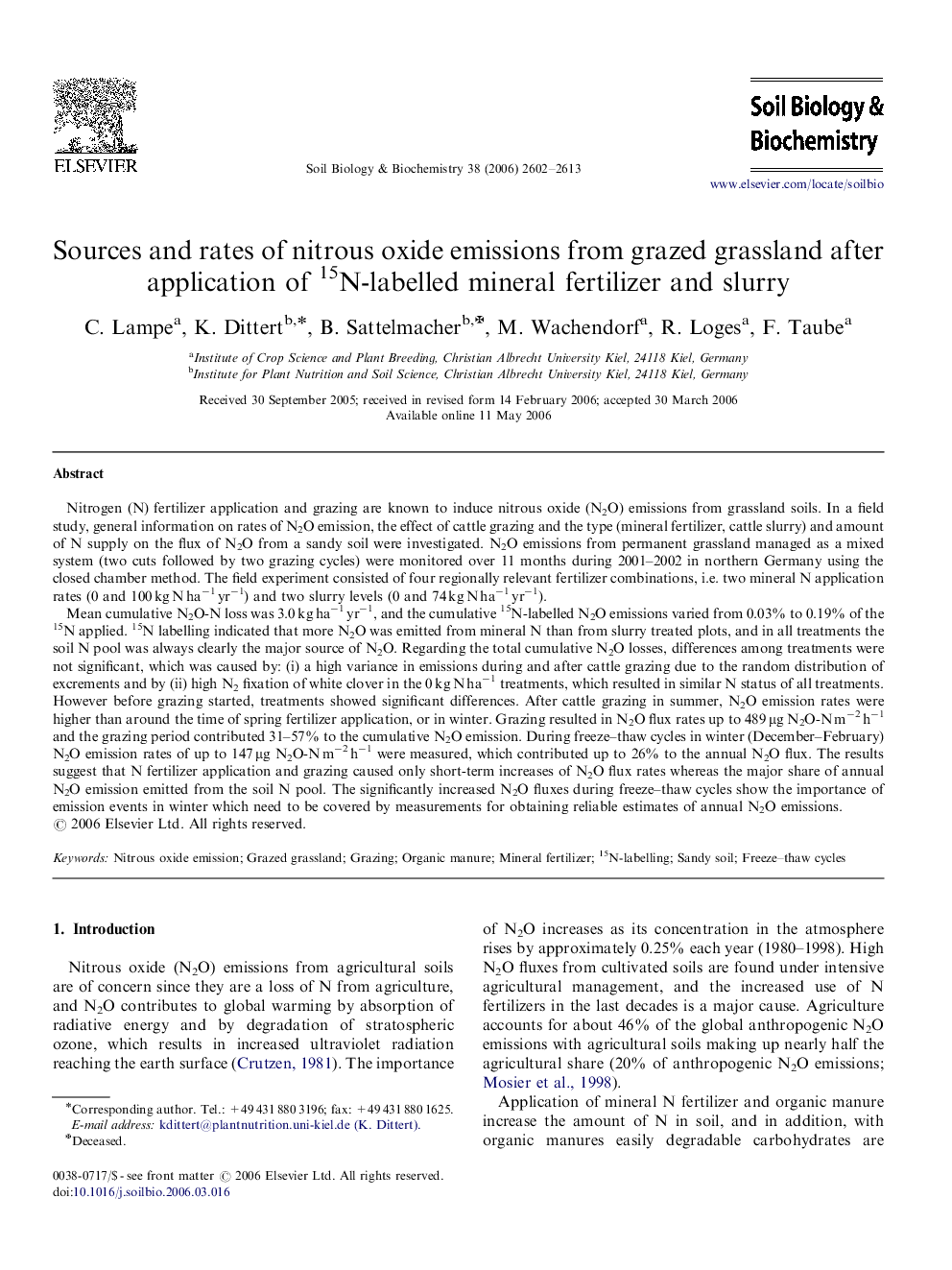| کد مقاله | کد نشریه | سال انتشار | مقاله انگلیسی | نسخه تمام متن |
|---|---|---|---|---|
| 2027113 | 1070090 | 2006 | 12 صفحه PDF | دانلود رایگان |

Nitrogen (N) fertilizer application and grazing are known to induce nitrous oxide (N2O) emissions from grassland soils. In a field study, general information on rates of N2O emission, the effect of cattle grazing and the type (mineral fertilizer, cattle slurry) and amount of N supply on the flux of N2O from a sandy soil were investigated. N2O emissions from permanent grassland managed as a mixed system (two cuts followed by two grazing cycles) were monitored over 11 months during 2001–2002 in northern Germany using the closed chamber method. The field experiment consisted of four regionally relevant fertilizer combinations, i.e. two mineral N application rates (0 and 100 kg N ha−1 yr−1) and two slurry levels (0 and 74 kg N ha−1 yr−1).Mean cumulative N2O-N loss was 3.0 kg ha−1 yr−1, and the cumulative 15N-labelled N2O emissions varied from 0.03% to 0.19% of the 15N applied. 15N labelling indicated that more N2O was emitted from mineral N than from slurry treated plots, and in all treatments the soil N pool was always clearly the major source of N2O. Regarding the total cumulative N2O losses, differences among treatments were not significant, which was caused by: (i) a high variance in emissions during and after cattle grazing due to the random distribution of excrements and by (ii) high N2 fixation of white clover in the 0 kg N ha−1 treatments, which resulted in similar N status of all treatments. However before grazing started, treatments showed significant differences. After cattle grazing in summer, N2O emission rates were higher than around the time of spring fertilizer application, or in winter. Grazing resulted in N2O flux rates up to 489 μg N2O-N m−2 h−1 and the grazing period contributed 31–57% to the cumulative N2O emission. During freeze–thaw cycles in winter (December–February) N2O emission rates of up to 147 μg N2O-N m−2 h−1 were measured, which contributed up to 26% to the annual N2O flux. The results suggest that N fertilizer application and grazing caused only short-term increases of N2O flux rates whereas the major share of annual N2O emission emitted from the soil N pool. The significantly increased N2O fluxes during freeze–thaw cycles show the importance of emission events in winter which need to be covered by measurements for obtaining reliable estimates of annual N2O emissions.
Journal: Soil Biology and Biochemistry - Volume 38, Issue 9, September 2006, Pages 2602–2613